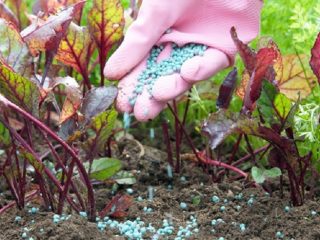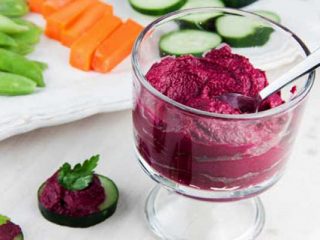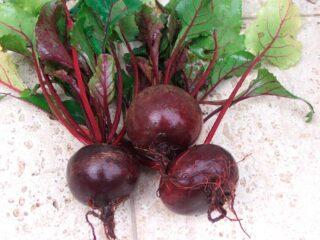Content
Borscht beet (Borschevaya beta vulgaris) is a high-yielding, low-maintenance crop with excellent taste. The root vegetable is excellent for preparing salads and borscht, stores well, and is suitable for winter planting. And its benefits for human health have been known since the time of Hippocrates.
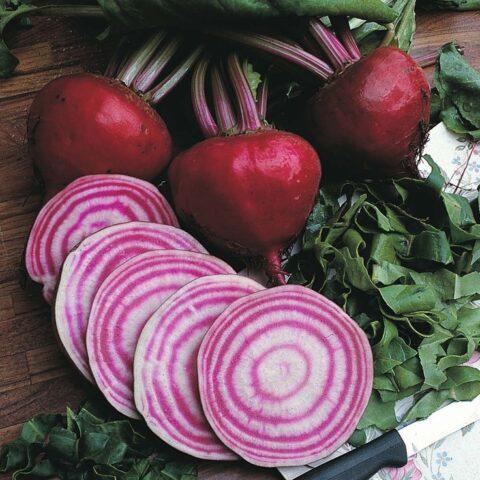
Borscht beets contain many vitamins and have healing properties.
Description of beet variety Borschevaya
Mature root vegetables of the variety weigh from 300 to 450 g. The vegetable has a good presentation, most specimens are without defects. The beet shape is smooth and round. The fruits are burgundy in color, the skin is smooth, the flesh is sweet and juicy. When cut, Borschtovaya beets are dark red with pinkish rings. The leaf rosette is neat, pressed in shape, consists of low green leaves with veins.
This table variety is used for winter preparations, added to first courses and salads, and consumed fresh.
Characteristics of Borsch beet
The variety is classified as a mid-season crop.The ripening period for Borschtovaya beets is approximately 85-100 days from the date of planting. The yield per 1 hectare ranges from 53-56 tons. Since the roots of the plant penetrate deep into the soil, it is actively saturated with nutrients, which is why it has good immunity and is able to resist many diseases. Borscht beets are not afraid of flowering, are moderately resistant to cold, and perform well when sown before winter. The variety tolerates transportation well over long distances and can be stored for a long time.
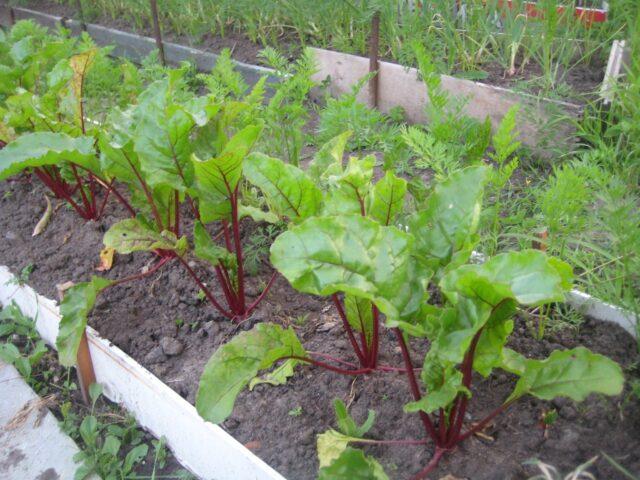
The seeds of the crop germinate even at a temperature of +4 0C
Difference between borscht and beetroot vinaigrette
Borscht beets mainly differ from vinaigrette beets in the alternation of pink and white rings. There is also a slight difference in taste. If you add it to borscht, it will turn out more rich. At the same time, the variety does not greatly color the broth, and the dish does not turn out excessively red.
Benefits and harms
Borscht beet has a rich mineral composition. It is considered the leader in iron content among all fruits, berries and vegetables, has a high concentration of potassium, copper, magnesium, and contains iodine, calcium, and trace elements. Regular consumption of the root vegetable is beneficial for hematopoiesis, helps normalize the functioning of the heart muscle, strengthens bone tissue, and protects the thyroid gland. Borscht beet helps improve visual acuity, has a beneficial effect on the function of the sex glands, increases potency, regulates blood pressure, and can increase hemoglobin levels. Thanks to the biologically active substances in the vegetable, its consumption relieves vasospasm and strengthens the walls of capillaries.In addition, Borscht beet helps remove toxins from the body, stimulates liver recovery, and has antimicrobial, anti-inflammatory, laxative, diuretic and restorative effects.
Despite the enormous benefits, there are some contraindications to the use of the vegetable. It should not be used for indigestion, acute gastrointestinal diseases, stomach ulcers, or flatulence. The product should be limited to people suffering from gastritis with high acidity. Beet Borscht is contraindicated in case of oxaluria and renal failure. Its freshly squeezed juice can cause nausea and vomiting, and spasm of blood vessels. It should be consumed no earlier than three hours after spinning.
Landing Features
To get a good result, you should follow agrotechnical rules when planting Borshchaya beets. Adhere to the sowing time, prepare the site correctly, plant crops according to the laws of crop rotation. Place the seeds on the bed in accordance with the diagram indicated on the package.
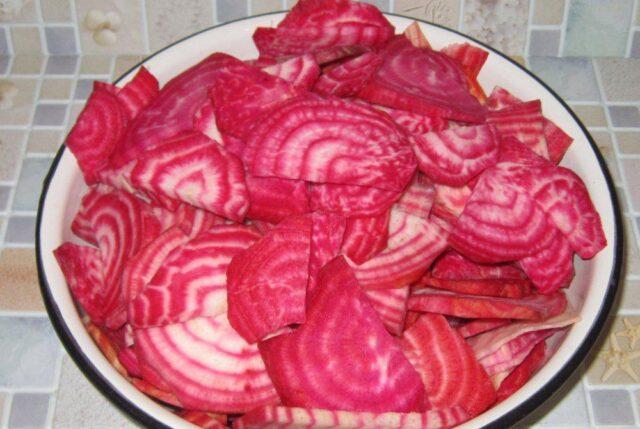
Borschevaya beets show the best results in garden beds after cucumbers, legumes, tomatoes, and onions
Sowing time
Planting material for the crop can be sown in spring or before winter. Usually, work begins in the first days of May or when the soil warms up to +10 °C at a depth of 10 cm. When planting in winter, the procedure is carried out at the end of October or beginning of November, so that Borschevaya beets ripen by the end of June.
Site preparation
The place for planting the crop is chosen to be sunny, protected from drafts and wind. The soil should be moist and fertile, with a pH between 6 and 7.Borschovaya beets respond well to sandy loam, nutrient-rich loam or chernozem with a fine lumpy structure. It is undesirable to place plantings on heavy or acidic soil with close groundwater. If the soil is fertile, then mineral fertilizers are applied at the time of digging the beds. If the soil is infertile, it is mixed with organic matter (compost or humus in the spring, manure in the fall). If the soil has a high level of acidity, it is fertilized with slaked lime.
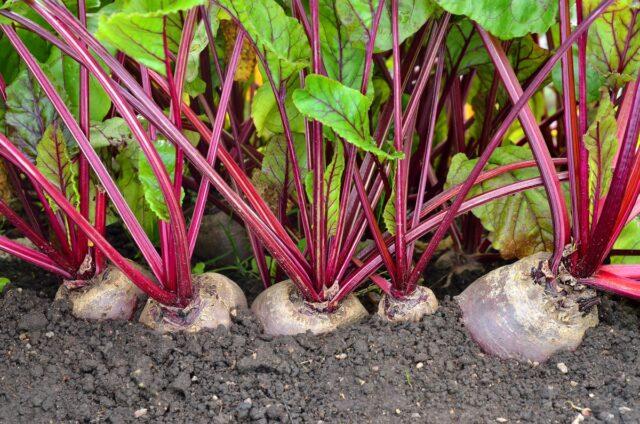
Root crops planted in a shaded area will lag behind in development
Sowing seeds
In the spring, planting material is sown on a flat surface, deepening it by 2-3 cm. Before winter, the seeds are planted in beds to a depth of 3-4 cm, after which they are mulched with humus or peat. For planting, choose one of three acceptable methods:
- Private. The width between rows is from 25 to 70 cm.
- Tape. The gap between the furrows is 15-20 cm.
- Broadband. The interval between the center of the stripes is 45 cm.
Rules of care
Borscht beet is an unpretentious crop, but like any plant it needs timely implementation of such measures as watering, loosening, weeding, protection from insects and diseases. The root crop loves moisture, so the planting beds should be watered regularly and make sure that the soil moisture at the stage of its formation does not fall below 75% at a depth of 30 cm. During the period of beet growth, the frequency of watering can be slightly reduced. 14 days before harvest, soil moisture should be stopped.Throughout the entire period of planting growth, it is recommended to weed and loosen the soil between the rows. In addition, when a pair of true leaves appear, the Borshchevaya beets are thinned to a distance of 4 cm. In the five-leaf phase, the procedure is repeated, leaving 7-8 cm gaps between the root crops. The crop is fertilized at least twice a season. For this purpose, nitrogen fertilizers are used after the first thinning and potassium-phosphorus fertilizers at the stage of root crop formation.
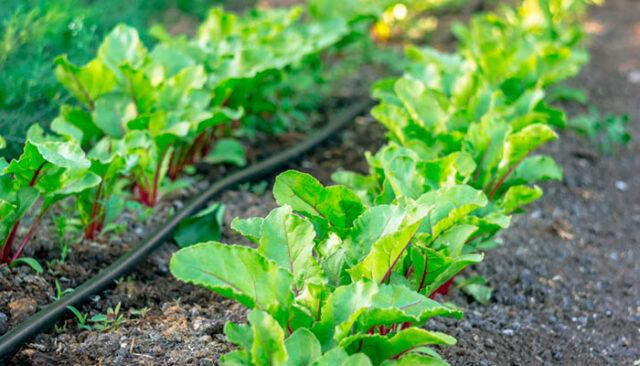
It is best to use the drip method when watering crops.
Protection from diseases and pests
Borscht beet is considered a fairly hardy plant, but if agricultural practices are violated or unfavorable conditions, it can be susceptible to diseases such as powdery mildew, blotch, blight, gray mold, and it can also be attacked by pests: beet flea beetle, nematode, shield moth, and aphid.
To protect the culture, it is necessary to carry out a number of preventive procedures:
- till the soil before planting;
- follow the rules of crop rotation;
- carry out treatment with chemicals;
- get rid of weeds.
Harvesting
As soon as the petioles of the Borschevaya beetroot begin to turn yellow and become dry, it means that it is time to harvest. This is a kind of signal that the root vegetables have ripened and become suitable for consumption. To remove them from the site, you should dig up each specimen and pull it out of the soil, then shake off the remaining soil, dry it in the sun and put it away for storage.
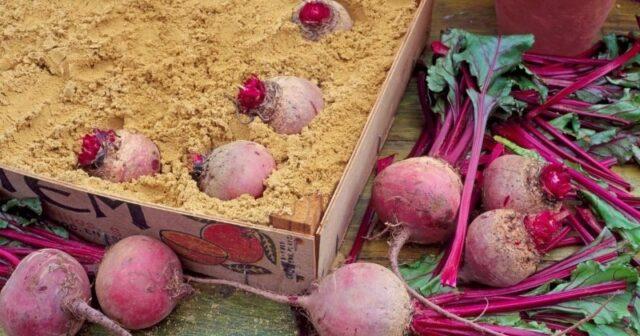
Borschevaya beets should lie in the cellar, sprinkled with sand.
Conclusion
Borscht beet is a mid-season variety of crop that, with proper care and compliance with planting rules, brings a good harvest.The root crops of the plant are tasty, have the same even shape and size. Ideal for adding to borscht or preparing salads. The great advantage of the variety is its long shelf life.
Reviews of Borscht beets
